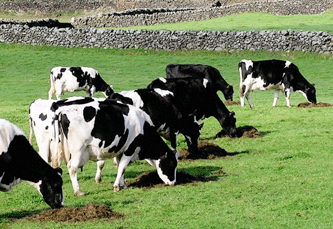 COUNTRY OF ORIGIN
COUNTRY OF ORIGINGrazing dairy cows, a model of sustainable agriculture
Results
The most significant result of this management model has been constant development of livestock farming over the last 30-40 years.
Both in an island like S. Miguel (the biggest in the Azores group), S. Jorge, or Terceira, milk producers (grouped into various cooperatives and associations, providing technical advice and other services), represent the mainstay of the regional economy, acting as a driving force for other economic sectors such as the service or tourist industry. 
The archipelago exports cheese, UHT milk, powdered milk and butter to the continent. Of particular note is an Azorean dairy product called Queijo de S. Jorge (one of the five islands from the central group of the archipelago), a traditional cheese made with untreated milk, which because of its special qualities and economic importance, received the Protected Designation of Origin appellation (PDO). This cheese, apart from being exported to Europe, also has another great market outlet in the United States and Canada, where there is a large community of Azoreans.
It is important to underline the considerable advantages that this model brings to the quality of life of farmers in the Azores. A breeder with 50 heads of milk cattle normally has an eight-point mobile milking machine on his farm, which can perform the two daily milking operations (one in the morning and one in the evening) in just 2-3 hours a day. It is a relatively short time if compared to the time spent by breeders in milking parlours, which requires much greater investment to set up compared to the purchase of mobile equipment.
DOWNLOAD THE BROCHURE PDF
English (0.8 MB)Spanish (0.8 MB)
Portuguese (0.8 MB)
ONLY TEXT
•Grazing dairy cattle in practice







